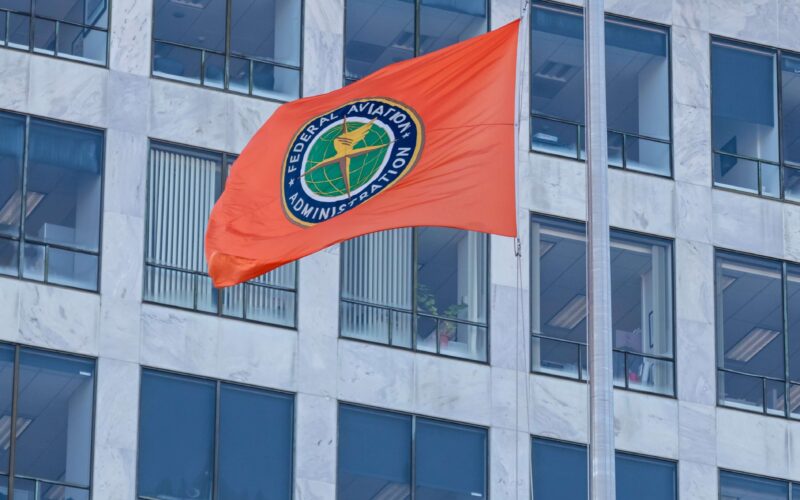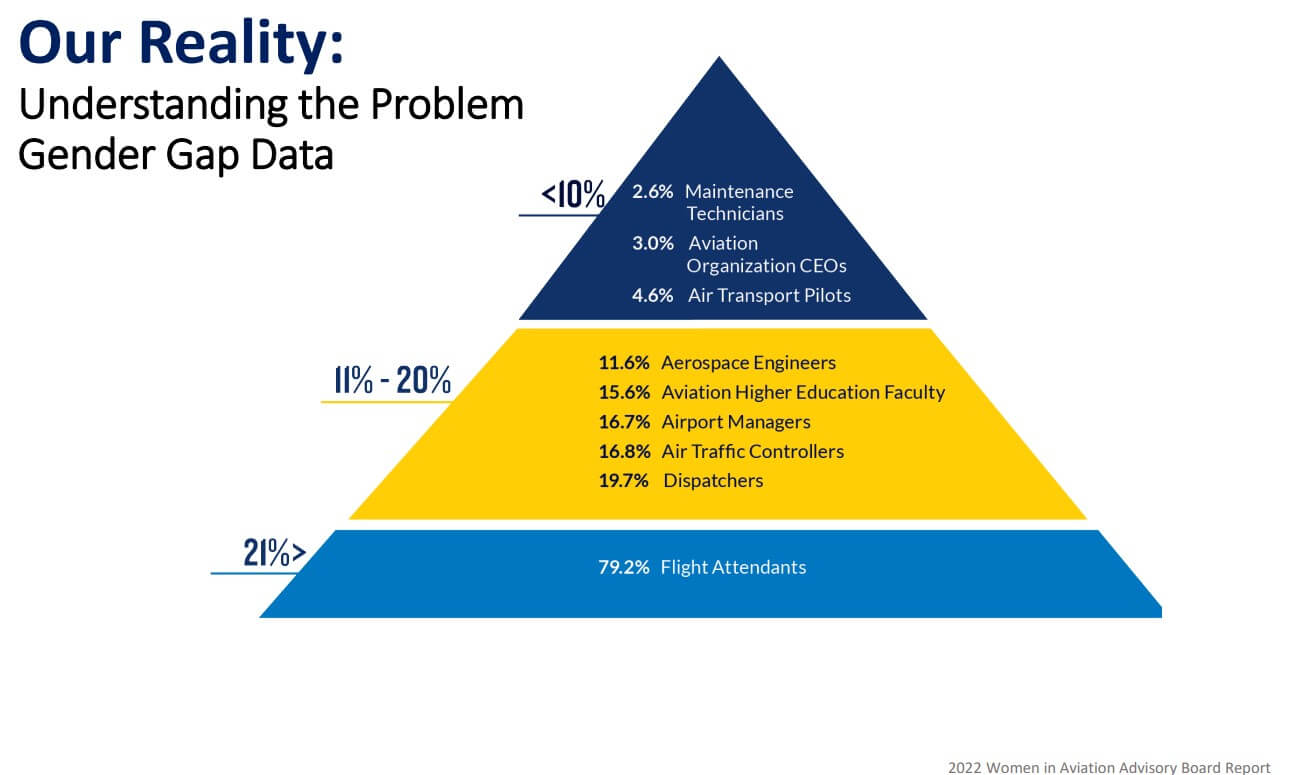How can we break down the barriers that are stopping more women from starting and sticking to careers in aviation? A committee in the United States has come up with a list of 55 recommendations to help drive change in the industry, focusing on the areas of culture, recruitment, retention, advancement and data.
The Women in Aviation Advisory Board (WIAAB), composed of 30 women from across the industry and academia and established by the Federal Aviation Administration (FAA), has created a report, entitled A Flight Plan for the Future, which is being submitted to the FAA this week.
The Board presented its report in an online meeting on March 21, 2022, highlighting how women still face a myriad of barriers to entering the industry, from lack of information, negative culture, the cost of training and false perceptions that they don’t have the physical strength required for some roles.
Crystal Barrois, first officer, said the aim was to change the flight plan for a young girl, who, for example, might be interested in becoming a pilot, but who finds barriers in her way throughout her life. She described how this journey looks, right the way from a lack of toys and books depicting female pilots and a shortage of information and encouragement at school, to taking out loans for training, to having to wear ill-fitting uniforms and use manuals that only refer to pilots as “he/him” then finally being pushed out due to poor maternity and flexible working options.
The 55 recommendations, addressed to Congress, the Department of Transportation, the FAA, and industry, aim to redesign the system and break down those barriers. They include recommendations on visual representation of women, uniforms, reporting programs for harassment, cadet programs, transition from military careers, parental leave, mentor schemes, statistics and data.
“The board’s recommendations have been placed along the timeline at these key points and incorporate an overarching theme of systematic and cultural change,” Barrois said.
The aim is to create a different timeline, one where a young girl is read books depicting pilots, technicians and controllers who are women, where her school gives advice on how to become a pilot, where she attends flight school with other women, and then gets hired and can wear a uniform that actually fits, through to flexible working options and then to becoming chief pilot and taking on leadership roles.
“It will take us all – industry, government, non-profits, and individuals working together to break down all of the barriers that exist for women today,” Barrois declared. “We all need to do our part where and when appropriate to enact the board’s recommendations so that meaningful change can be made. So that our first young lady story becomes a thing of the past and we hear only success stories like the second woman from now on.”
FAA administrator Steve Dickson welcomed the board’s work: “Diversity makes us stronger, it brings new perspectives, increased innovation, and, frankly, makes for better decisions as well. Women are essential to the continued safety, innovation and success of this industry.”
Gender gap data
To highlight the scale of the challenge, the board presented data showing how women typically make up fewer than 20% of the workforce in aviation occupations.
“It’s just not getting much better over decades of time,” managing engineer Kelly Jost commented. “We’ve seen minuscule increases over time and the percentage of the workforce that are women, and that needs to change.”
Source: 2022 Women in Aviation Advisory Board
Change will also not be fast, the board warned, and it will take an industry-wide effort.
“This esteemed group of women has done an incredible job of developing a roadmap to attract, retain and advance more women in aviation,” said Jill Meyers, international aviation consultant. ”I echo the words of WIAAB member Bobbi Wells, who reminded everyone that these recommendations in total will take years to implement, not weeks or months. Our entire community will need the support of many people and organizations to reach any semblance of equality.”


